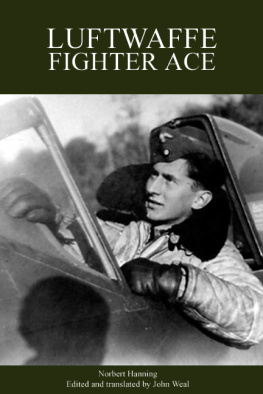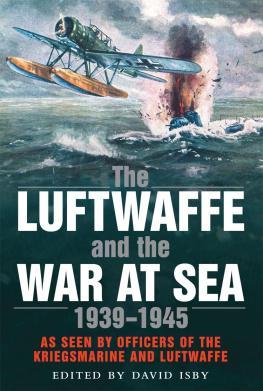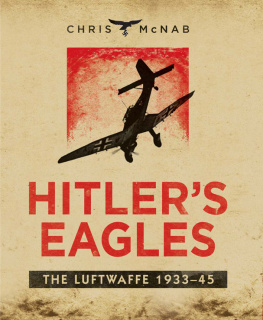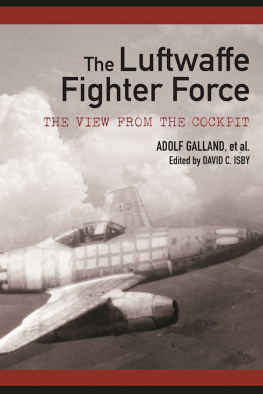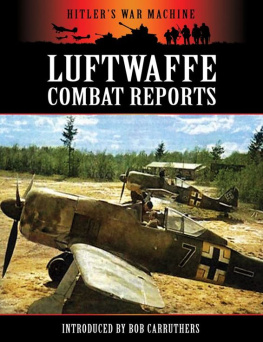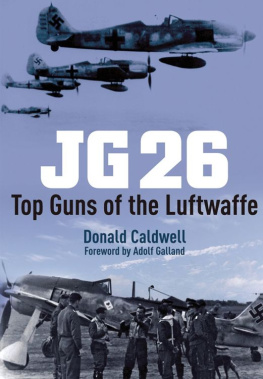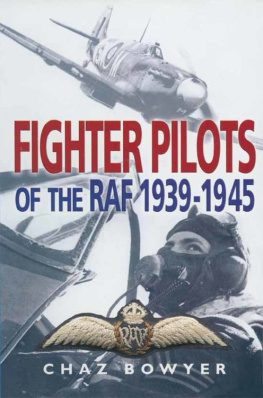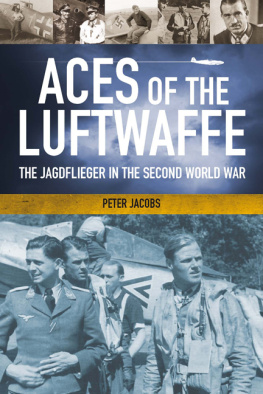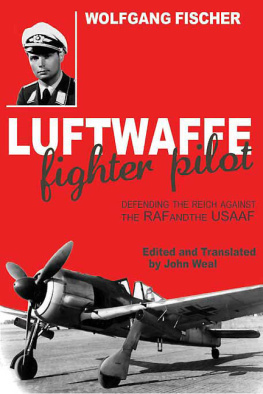Hannig - Luftwaffe Fighter Ace
Here you can read online Hannig - Luftwaffe Fighter Ace full text of the book (entire story) in english for free. Download pdf and epub, get meaning, cover and reviews about this ebook. year: 2004, publisher: Grub Street Publishing, genre: Non-fiction. Description of the work, (preface) as well as reviews are available. Best literature library LitArk.com created for fans of good reading and offers a wide selection of genres:
Romance novel
Science fiction
Adventure
Detective
Science
History
Home and family
Prose
Art
Politics
Computer
Non-fiction
Religion
Business
Children
Humor
Choose a favorite category and find really read worthwhile books. Enjoy immersion in the world of imagination, feel the emotions of the characters or learn something new for yourself, make an fascinating discovery.
- Book:Luftwaffe Fighter Ace
- Author:
- Publisher:Grub Street Publishing
- Genre:
- Year:2004
- Rating:5 / 5
- Favourites:Add to favourites
- Your mark:
- 100
- 1
- 2
- 3
- 4
- 5
Luftwaffe Fighter Ace: summary, description and annotation
We offer to read an annotation, description, summary or preface (depends on what the author of the book "Luftwaffe Fighter Ace" wrote himself). If you haven't found the necessary information about the book — write in the comments, we will try to find it.
Luftwaffe Fighter Ace — read online for free the complete book (whole text) full work
Below is the text of the book, divided by pages. System saving the place of the last page read, allows you to conveniently read the book "Luftwaffe Fighter Ace" online for free, without having to search again every time where you left off. Put a bookmark, and you can go to the page where you finished reading at any time.
Font size:
Interval:
Bookmark:


Published by
Grub Street
4 Rainham Close
London
SW11 6SS
Copyright 2004 Grub Street
Text copyright 2004 Norbert Hannig and John Weal
British Library Cataloguing in Publication Data
Hannig, Norbert
Luftwaffe fighter ace
1. Hannig, Norbert 2. World War, 1938-1945Personal narratives, German 3. World War, 1939-1945Aerial operations, German 4. Fighter pilotsGermanyBiography
I. Title II. Weal, John A.
940.544943092
ISBN 1 904010 94 6
eISBN 978-1-908117-97-7
All rights reserved. No part of this publication may be reproduced, stored in a retrieval system, or transmitted in any form or by any means, electronic, mechanical, photocopying, recording, or otherwise, without the prior permission of the copyright owner.
Typeset by Pearl Graphics, Hemel Hempstead
Printed and bound in Great Britain by Biddles Ltd, Kings Lynn
Mine was the generation that was not granted the mercy of a later birth, as ex-Chancellor Helmut Kohl so tellingly phrased it. Coming into the world in the aftermath of the First World War, Iand countless others like megrew up fated to become embroiled in the Second.
In 1918 Germany was not the sea of ruins that she was in 1945. After the first great conflict her towns and cities had remained intact, her industries continued to produce and her infrastructure to function. The physical damage may have been minimal, but there was almost total internal, civil and economic collapse. The monarchy had been toppled, unemployment and inflation raged, and civil unrest became civil war.
Then an unknown corporal from the First World War took the decision to become a politician. His propaganda was simple but effective: he promised bread and work, the betterment of everyday life both morally and economically, the scrapping of the Treaty of Versailles, which had placed such a huge burden of debt on the country, and Germanys re-emergence as an equal among the nations of Europe.
When Adolf Hitler came to power in 1933 there were six million unemployed. Give me four years, he urged. Few now remember that he kept those original promises. There was food and work for all. A sense of purpose and order was restored. And ambitious building programmes were begun.
But there was a hidden agenda. For every metre of autobahn laid, how many shells were produced? There were signs, of course; Hermann Grings stated preference for guns rather than butter perhaps the most blatant of them. But the majority of the populationand as a teenager growing up in Silesia, I freely confess to being one of themwas unaware that they were being prepared for another conflict.
When it came the propaganda intensified. Ours was the age group it was aimed at, and we gladly answered the call. We also suffered the consequences. I lost my father, a brother and my homeland. Millions of others around the world paid a much higher price.
Achtungam attacking! I came in about 300 metres above the right-hand bomber of the high squadron. Matching my speed to his, I side-slipped down towards his tail, got in close behind him and aimed at his two starboard engines. Pieces flew off his wing as my shells struck home. Bright flames streamed from his enginesI continued to firean inferno erupted as his wing tanks went up. As I dived away I saw the bombs tumbling from his belly.
My fighter suddenly shuddered and I heard a loud rattling noise. I had been hit by return fire. I steepened my dive to get out of danger. All seemed in order, but as I began to pull out of my descent both undercarriage legs flopped down and locked. Try as I might I couldnt retract them again. The little wheels down and locked indicator rods sticking up out of each wing refused to budge. Although there was still no sign of any enemy fighters, it was unhealthy to remain flying around for too long with my undercarriage on display for all to see. And to attempt a three-pointer on the uneven ground below would be tantamount to suicide; the risk of flipping over onto my back was too great. I had to find the nearest airfield, and quickly
My flying career began with a conversation I had with a school friend in the upper fifth shortly after Easter 1940. He belonged to the Flieger-Hitlerjugend, a branch of the general Hitler Youth movement, whose aim was to promote gliding as a sport among boys aged between 14 and 18. Its members were taught to fly gliders free of charge by instructors from the NSFK (National Socialist Flying Corps). This corps, itself a part of the political SA, was the umbrella organization responsible for furthering the cause of all things aeronautical among an already air-conscious German public. As such it had taken over, and now controlled, every aspect of sports flying in the country.
But when my classmate suggested that I team up with him and learn to fly too, I foresaw a slight problem. Five years earlier, at the age of eleven, I had joined the Jungvolk. Modelled along the lines of the scout movement, the Jungvolk was for youngsters not yet old enough to enter the Hitler Youth. When I reached my fourteenth birthday, however, I had decided not to transfer my allegiance, but rather to stay with the Jungvolk and become a senior leader. Since that time I had worked my way up through the ranks and was now a Fhnleinfhrer (troop leader), in charge of a troop of 150 lads.
Despite my advanced years I therefore still belonged to the Jungvolk. And as a member of this junior organization I was not entitled, strictly speaking, to join the Flieger-Hitlerjugend. But if this difficulty could be overcome, I would grab the opportunity like a shot. To be able to fly had been my boyhood dream since the days of making paper aeroplanes. So my school friend made the necessary enquiries, I was accepted, and thus embarked upon my life of flying.
In the Whitsun holidays of 1940 the pair of us, both in uniform, set off by bike from Zobten, the village where we lived, for the nearby town of Bunzlau. This was the regional centre of what was then our part of Lower Silesia, but which is now in Poland. On arriving in Bunzlau we made our way to the NSFK workshops where we reported to the duty instructor. He in turn took us to the head of the establishment, an NSFK Sturmfhrer, who greeted us in a fatherly fashion with a smile and a friendly handshake. After asking a few questions, he briefly outlined for me the daily routine of a gliding school.
I was assigned to a group of fourteen Flieger-Hitlerjugend who were busy loading an SG-38 training glider on to a truck. This was in preparation for the drive out to the slopes next morning for a days flying. Two other groups were similarly engaged. Once all three gliders had been securely stowed, there was an hours lecture on the theory and practice of flight. Then the following days programme and duties were read out before it was time for supper. Once this was over we spent a convivial evening getting to know one another.
These few hours were enough to make me feel completely at home in the company of my new friends. The next morning I woke, washed, dressed and breakfasted as usual. But then began a new routine: morning parade and roll-call, followed by the order to climb aboard the vehicles. Soon our small convoya van, three trucks each carrying a glider, and an ambulance (!)were on the road and heading out to the practice slopes.
Font size:
Interval:
Bookmark:
Similar books «Luftwaffe Fighter Ace»
Look at similar books to Luftwaffe Fighter Ace. We have selected literature similar in name and meaning in the hope of providing readers with more options to find new, interesting, not yet read works.
Discussion, reviews of the book Luftwaffe Fighter Ace and just readers' own opinions. Leave your comments, write what you think about the work, its meaning or the main characters. Specify what exactly you liked and what you didn't like, and why you think so.

